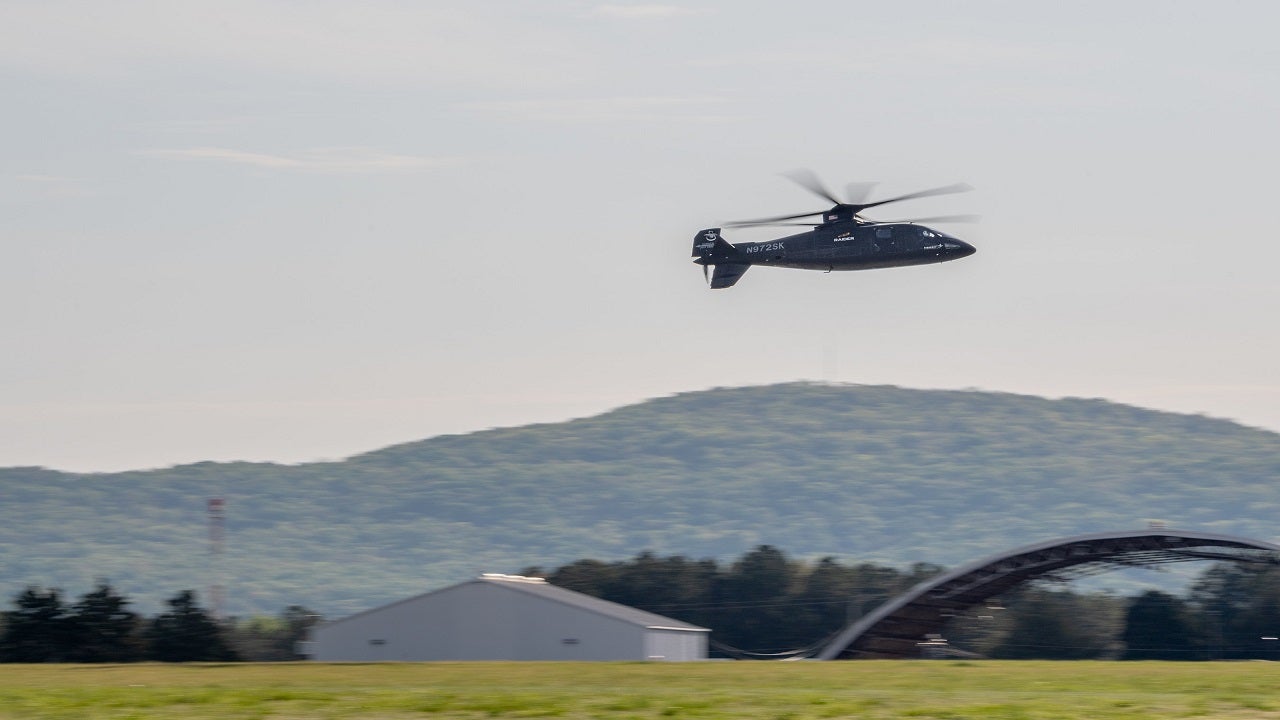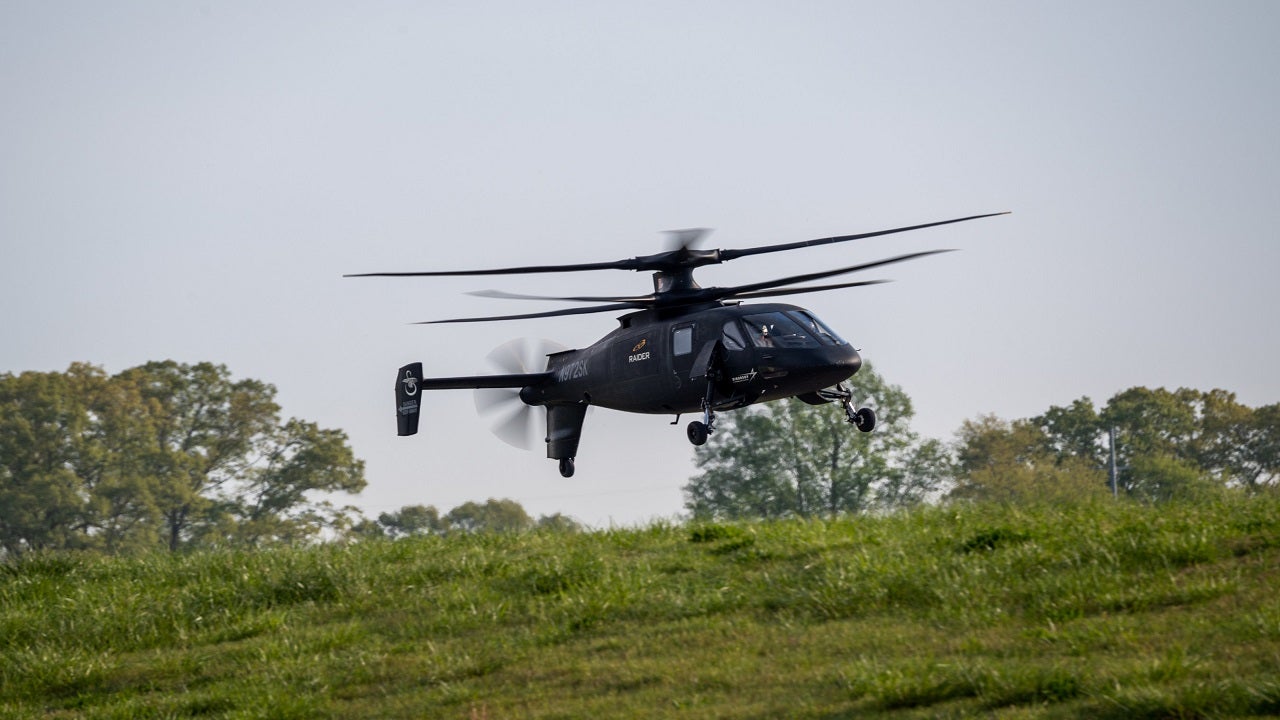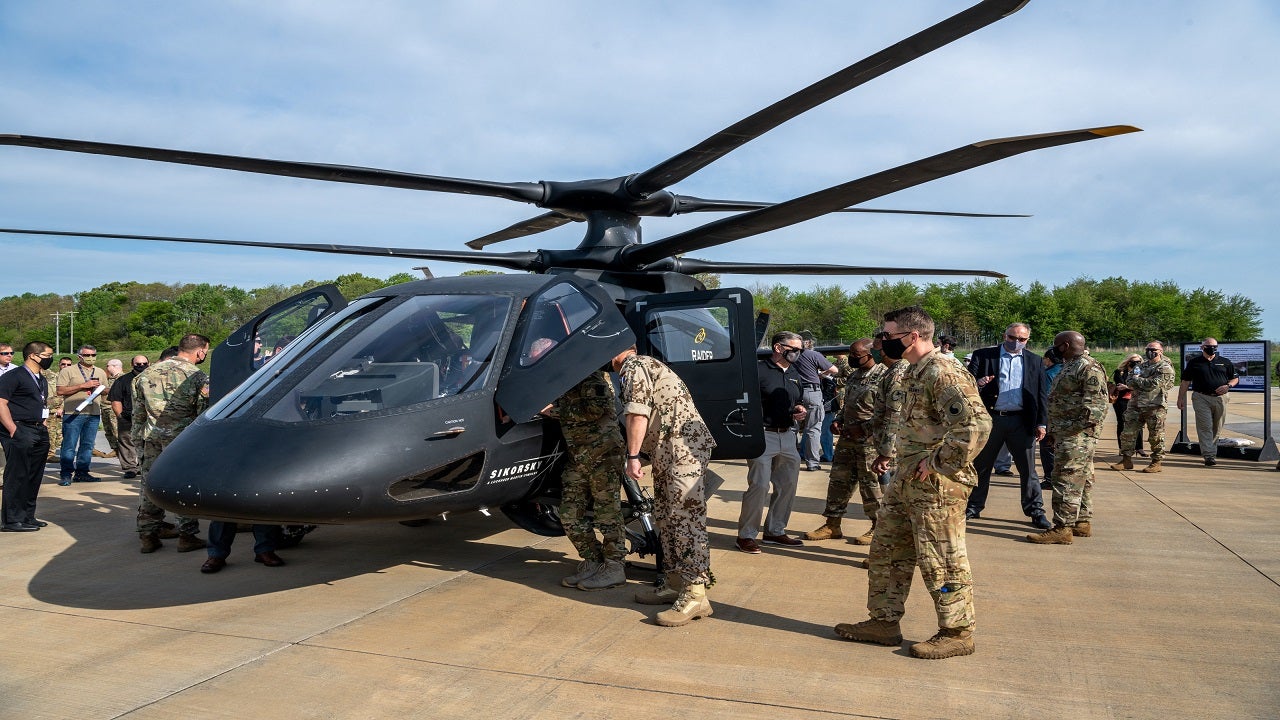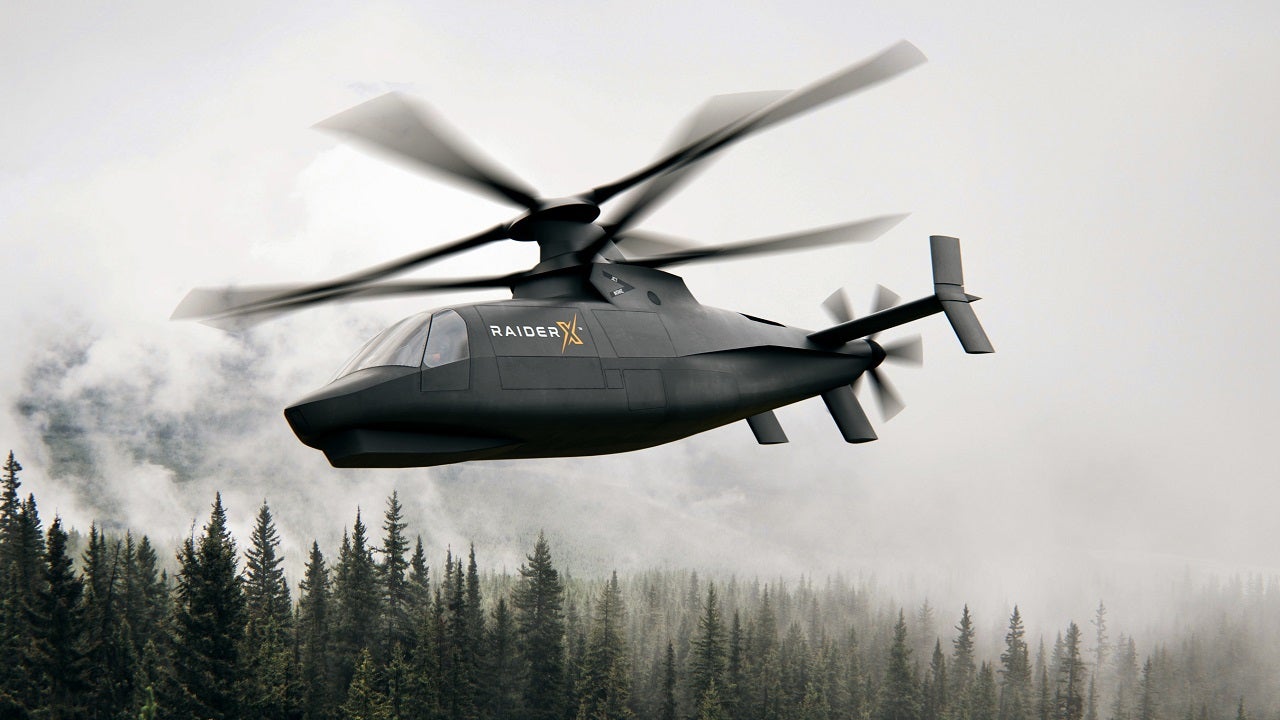Raider X is a fast, agile, survivable compound coaxial helicopter being developed by Lockheed Martin’s subsidiary Sikorsky to provide soldiers an edge on future battlefields. The concept is proposed as a prototype for the US Army’s ongoing Future Attack Reconnaissance Aircraft (FARA) competition.
The next-generation helicopter concept is designed to meet the requirements of the US Army’s scouting mission. It will enable a rapid response to the ever-changing threats in challenging environments. Sikorsky is leveraging the latest digital design and manufacturing techniques to build the new helicopter.
Equipped with advanced weapons and sensor systems, the Raider X is a knife fighter that will allow operators to detect, identify, and attack adversaries with superior speed.
Sikorsky Raider X Compound Coaxial Helicopter development
The Raider X was first unveiled at the Association of United States Army (AUSA) exhibition in October 2019.
The construction of the Raider X prototype began in February 2020. In April 2021, the Sikorsky S-97 Aircraft performed two demonstrations in the presence of US Army officials at Redstone Arsenal in Huntsville, Alabama.
The test flights were performed to provide a glimpse of the Raider X platform being developed for the FARA programme. The aircraft demonstrated low-level helicopter manoeuvrability and high-speed capability.
Design and features of Sikorsky Raider X Compound Coaxial Helicopter
The Raider X design is an improved version of the Sikorsky S-97 Raider light tactical helicopter. It features an agile, digital design that is already being used in the production of other Lockheed platforms such as F-35 multi-role fighter aircraft, CH-53K King Stallion heavy-lift cargo helicopter, and CH-148 Cyclone maritime helicopter.
The design will reduce the procurement cost of the platform and allow further upgrades to keep pace with evolving threats. The S-97 Raider serves as a risk reduction platform for Sikorsky’s FARA concept, providing data-driven design decision-making capability during the development.
The helicopter has a coaxial rotor system design with two rotors mounted on the same axis. The coaxial rotors are a key feature of the majority of the aircraft concepts proposed for the FARA programme.
The aerodynamics around the rotor are optimised for enhanced control and speed, which will, in turn, save power. Made of composites, the rotors are ultra-rigid and feature advanced vibration controls, which will mitigate issues related to wear and tear and thereby reducing maintenance needs. The X2 rotor will enable highly responsive manoeuvrability along with other high-performance capabilities such as improved level acceleration and braking, low-speed hover, and off-axis hover.
The compound coaxial technology will provide unmatched potential for increased speed, payload, and combat radius. The flexible architecture will allow a range of aircraft configurations and load-outs to meet the specific mission needs of customers.
The fuselage will be made of composites to enable vibration control and offer higher corrosion resistance in harsh environments. The retractable landing gear of the helicopter will reduce the parasitic drag of the fuselage.
Avionics
The helicopter’s avionics and mission systems will be based on the modern open systems architecture (MOSA), which will provide ‘plug-and-play’ flexibility for computing, survivability, weapons, and sensors. The advanced design and technology will also enhance aircraft availability through self-monitoring and condition-based maintenance.
The fly-by-wire flight controls will impart stability to the helicopter and reduce the workload on pilots while allowing them to focus on the mission. The avionics suite will support future autonomous operations.
Sikorsky’s proven X2 technology
The Raider X helicopter features the latest design in the X2 family of aircraft. The X2 technology, which has been undergoing testing for more than ten years, has enabled speeds of more than 250k, and operations at an altitude over 9,000ft.
The X2 technology also allows the helicopter to perform low-speed and high-speed manoeuvre envelopes with an angle of banking of more than 60°.
Manoeuvrability of Sikorsky Raider X CCH
The rotorcraft will offer precise low-speed handling capability with the fly-by-wire control and main rotor allowing enhanced agility even at lower speeds. The feature will ensure operational safety in near-ground complex environments.
The propellers and the main rotors can be accelerated without changing the altitude levels of the helicopter to enable a rapid increase in speed when operating in uneven and constrained areas.
The aircraft’s ability to reverse pitch on the propeller reduces the speed and enables level body deceleration. The rigid main rotor enables quick turns with a low turning radius and increased lethality.
The propeller of the helicopter can be imparted with reverse thrust so that the descent of the aircraft can be slowed to place rounds on the identified threat and attack it with decreased engagement time.
Raider X engine details
The Raider X will be powered by a T901 engine supplied by GE Aviation, a subsidiary of technology and financial services conglomerate General Electric. The engine has a rated output of 3,000shp.
The T901 engine offers power-growth curve with subsequent upgrades in future to enable increased speed and payload capacity. It is integrated with ceramic matrix composites (CMCs) and uses advanced manufacturing technologies such as 3D printing.
FARA programme details
The FARA is a part of the US Army’s Future Vertical Lift (FVL) programme, which aims to modernise its aircraft fleet to be able to meet future mission requirements.
The US Army awarded design contracts to Bell Helicopter, Karem Aircraft, Boeing, Sikorsky, and a team of AVX Aircraft and L3Harris under the first phase of the competition in April 2019.
In March 2020, Sikorsky and Bell were shortlisted for the final design, build, and test phase. The two selected companies will participate in a fly-off demonstration in 2022 before the final contract award.
The US Army is seeking the development of a preeminent attack reconnaissance aircraft for Army Combat Aviation Brigades and the Joint Force under the FARA programme, which is its topmost priority for the army aviation.







